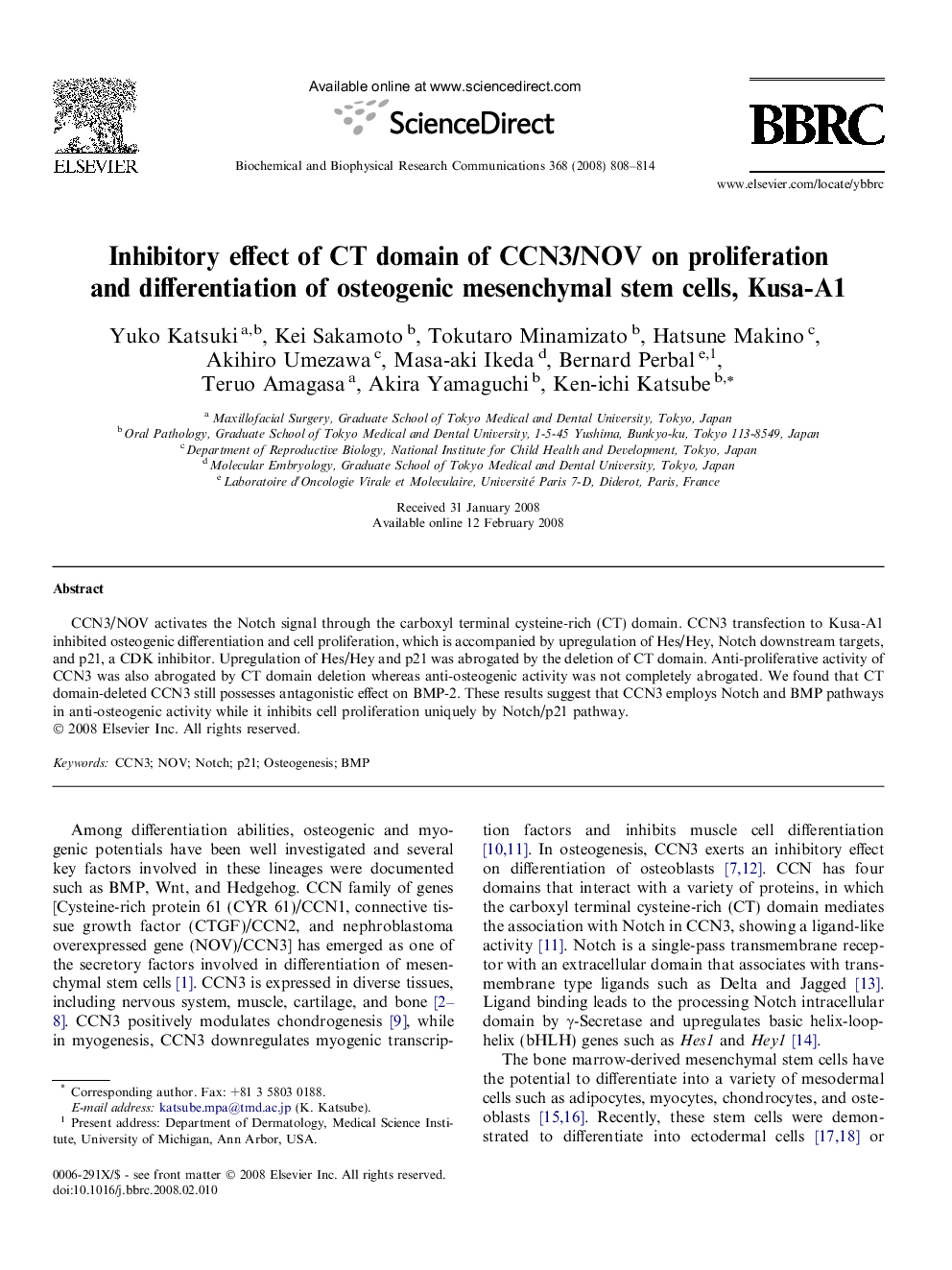| Article ID | Journal | Published Year | Pages | File Type |
|---|---|---|---|---|
| 1936211 | Biochemical and Biophysical Research Communications | 2008 | 7 Pages |
Abstract
CCN3/NOV activates the Notch signal through the carboxyl terminal cysteine-rich (CT) domain. CCN3 transfection to Kusa-A1 inhibited osteogenic differentiation and cell proliferation, which is accompanied by upregulation of Hes/Hey, Notch downstream targets, and p21, a CDK inhibitor. Upregulation of Hes/Hey and p21 was abrogated by the deletion of CT domain. Anti-proliferative activity of CCN3 was also abrogated by CT domain deletion whereas anti-osteogenic activity was not completely abrogated. We found that CT domain-deleted CCN3 still possesses antagonistic effect on BMP-2. These results suggest that CCN3 employs Notch and BMP pathways in anti-osteogenic activity while it inhibits cell proliferation uniquely by Notch/p21 pathway.
Related Topics
Life Sciences
Biochemistry, Genetics and Molecular Biology
Biochemistry
Authors
Yuko Katsuki, Kei Sakamoto, Tokutaro Minamizato, Hatsune Makino, Akihiro Umezawa, Masa-aki Ikeda, Bernard Perbal, Teruo Amagasa, Akira Yamaguchi, Ken-ichi Katsube,
